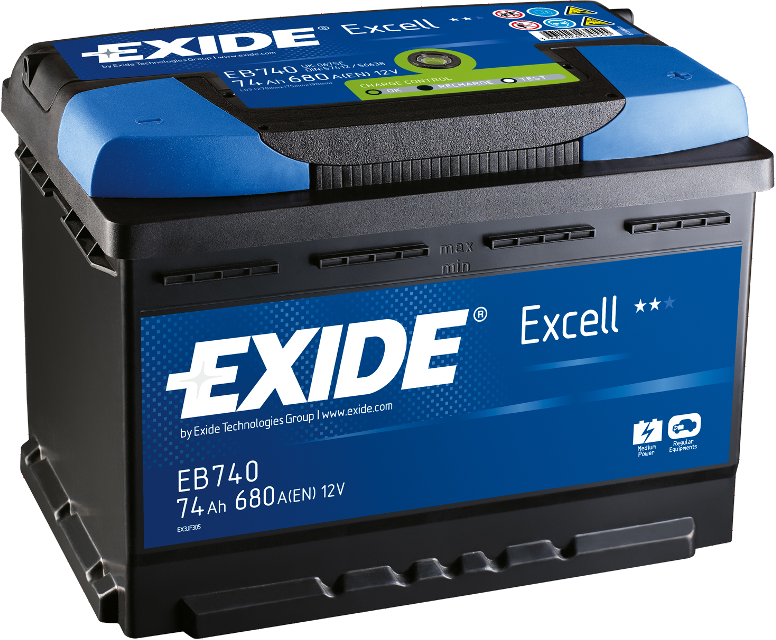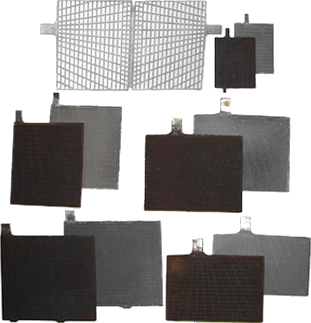
A vehicle is generally using as much electricity as the alternator is generating, there are times when extra energy is needed, and that is one of the times when a battery is useful. This is especially the case when starting the engine, which requires energy to get the engine going (and that energy comes from the starter motor, which is powered by the battery).
Sometimes the alternator generates more electricity than the vehicle needs to use, and this extra electricity recharges the battery.
How do Automotive Batteries Store Energy?
No battery actually stores electricity, they instead store potential energy (chemicals which can be converted into energy and other chemicals without potential energy) which can be used later. Car batteries are one of the types that can recharge, and this is due to the chemicals stored within it. Car batteries are typically lead-acid batteries consisting of six sets of two-volt cells in series which form a 12-volt system.
 This involves chemical names, terms, and/or reactions, which may be complicated without a basic understanding of chemistry.
This involves chemical names, terms, and/or reactions, which may be complicated without a basic understanding of chemistry.
In a lead-acid battery, plates of lead (as seen in the picture at the right) are submerged in a solution of about 35% sulfuric acid and 65% water. When electrons are discharged as electricity, the sulfur chemically bonds to the surface of the lead plates as lead sulfate. When the battery is recharged, this process is reversed.
Cold Cranking Amps
The CCA (cold cranking amps) rating is about how many amps the battery has (when fully charged) to turn over the starter at 0°F (-18°C) for 30 seconds. This rating is most widely used to compare batteries because it is one of the more difficult tests for a battery to score well on.
Cranking Amps
Also called MCA on marine-grade batteries, the cranking amp rating is the same as the CCA rating, except at 32°F (32°C). Cranking amps aren't used as much as cold cranking amps for quality comparisons since they are usually closer together and always in a useful range.
Reserve Capacity Minutes
A measurement of how much energy is stored in a battery is RCM (Reserve Capacity Minutes), which refers to how long a battery will continuously deliver 25 amps before its voltage drops below 10.5 volts.
Battery Hardware
A lot of bits of hardware are necessary to make a battery useful to a vehicle, and to prevent it from being damaged during normal driving.
Hold-Downs
Battery hold-downs keep the battery in place and prevent it from tipping over, sliding around, and otherwise moving out of position. A loose battery will, in the best case scenario, have its life shortened by colliding with objects under the hood. Loose batteries may allow the positive terminal to come in contact with body ground and short out.
Terminal Clamps
Battery terminals are typically just lead posts, and the wires connecting to them need a clamp in order to maintain a reliable connection. The clamps attach in two ways; permanently to the battery cable and to the battery post in a removable manner for service.
Battery Cable
Battery cables are thick wires (usually 0 to 4 AWG) that lead to main components, such as the alternator or starter. They are typically coated in thick insulation so mild wear and tear won't allow material to contact the wire and cause a short.
The weakest point of a battery cable tends to be the ends, because the strands inside are exposed to the elements. The terminal clamp side of the battery can allow battery acid from a compromised battery to wick down the wire strands, sometimes all the way down to the starter or other components, and corrode connectors and parts at the other end.
Battery Maintenance: Mechanical Basics
Recovering a Battery
Sometimes batteries won't recharge through conventional means, and need to have special charging techniques applied in order to get them to charge again.
How to Recover an AGM Battery
Absorbed glass mat batteries can be trickier to recover, but the right charger can make the job much easier!
Battery Trays
A battery tray acts as a base for the battery to sit on, and sometimes helps keep the battery in place. Plastic is the most common material that modern battery trays are made of because it does a better job holding up to battery acid, but metal trays have also been used commonly, due to their strength.
Restoring a Metal Battery Tray
This video by 802 Garage shows how to restore a battery tray using paint remover to remove the original paint, removing the rust, and powder coating the cleaned tray to give it an original-appearing finish.
- Wires
- Key Fob
- Starter Motor
- Lead (Metal)
- Alternator
